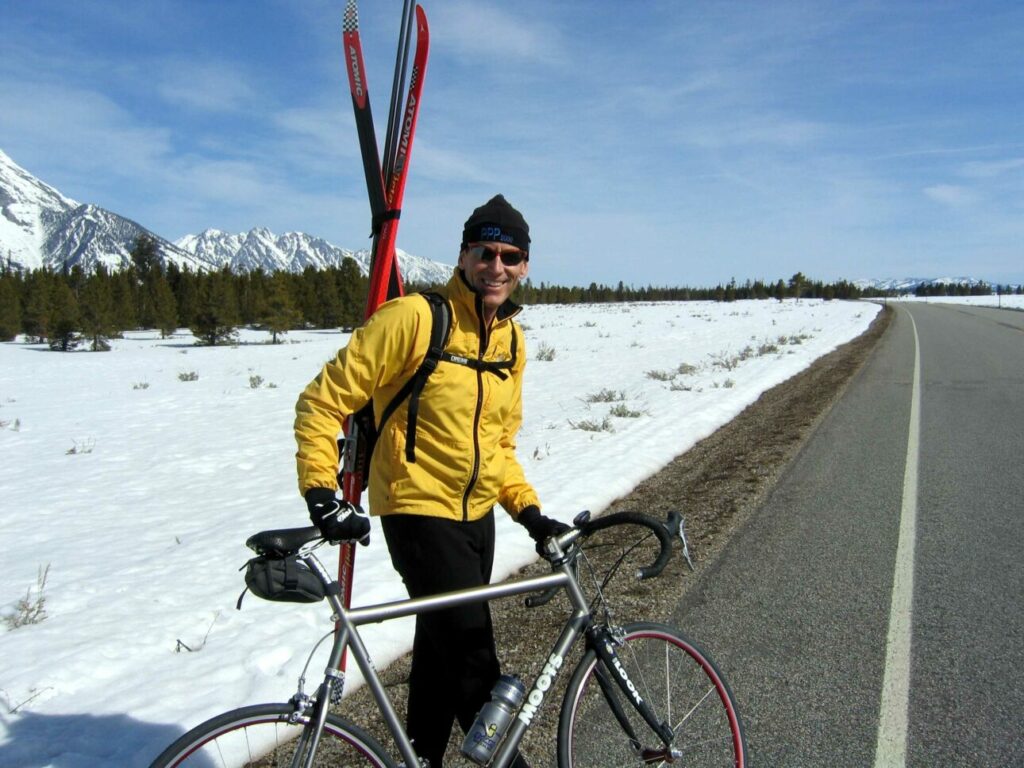Nordic Profile in Sean O’Malley’s Own Words
What brought you to Jackson Hole?
My high school history teacher/lacrosse coach piled me, five classmates, and a large, Great Pyrenees dog (Guyot) into his Chevy van and we drove to Jackson Hole in March of 1971. We took turns driving (except Guyot) and made the trip from Connecticut to Jackson in 36 hours. We stayed at the Hostel for $10/night and bought our lift tickets, with a student ID, for $4.50. The only lifts on the mountain were Teewinot, Apres Vous, and the Tram. Coming from a 600 vertical foothill in the Berkshires with icy, man-made snow, it was heaven!
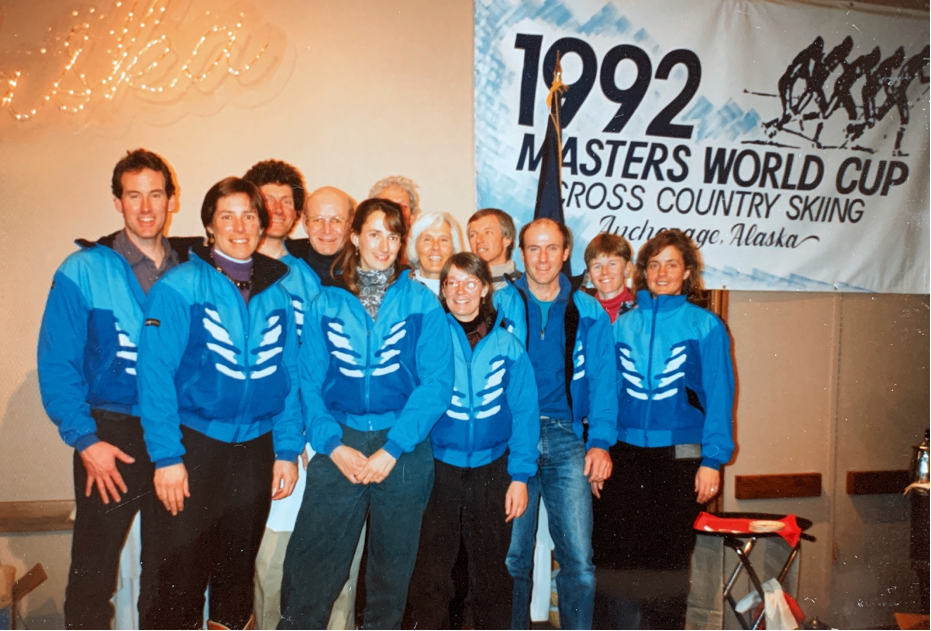
I returned in 1974 with a friend and spent a week snow camping and skiing in Cascade Canyon. In 1976 I spent the summer as a “Volunteer in the Park” donated by the Park Service to the Teton Science School in Kelly. Then, in 1977, following my graduation from Trinity College with a degree in psychology, I returned to TSS as assistant director (chief gofer). I was so fortunate to work for Ted and Joan Major at the Science School as they provided a springboard into the Jackson Hole community. Through the school, and their students, I met the Bennett, Ashley, and Morgan families, among others – folks who gave me a home away from home, helped me find employment, and generally guided me – when I could have easily made different, potentially less desirable, choices. Except for a few years in Laramie (studying civil engineering) and a short stint in southern Utah (a less desirable choice), I have been in the Valley ever since.
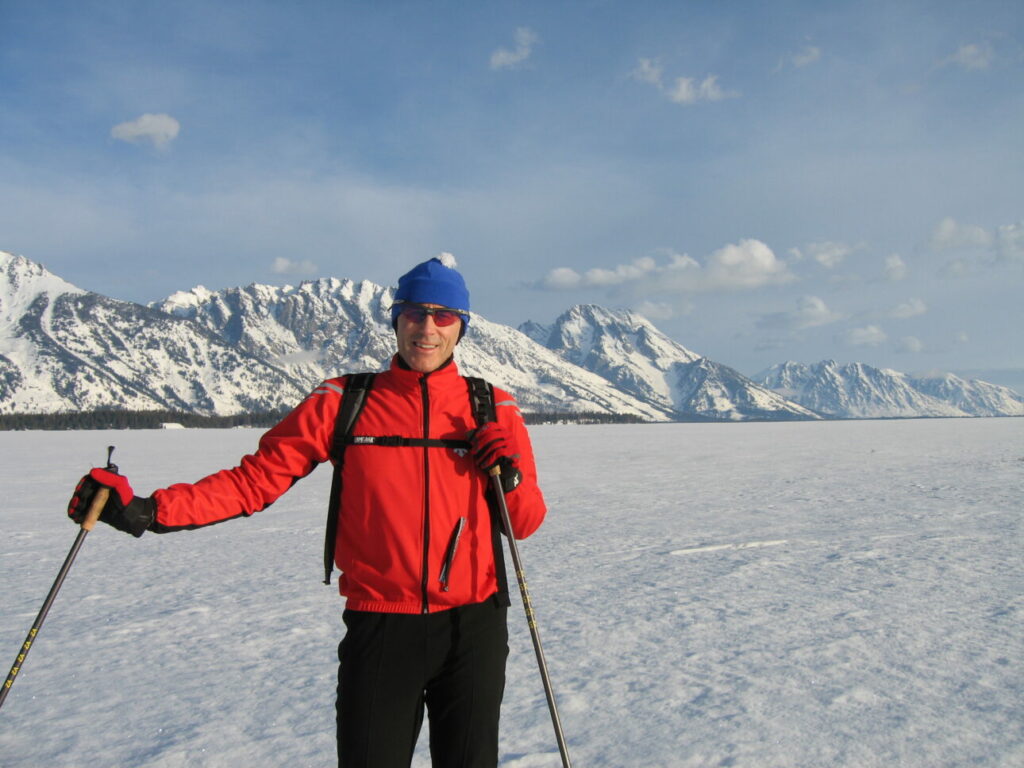
When/Why did you first get into Nordic skiing?
Even growing up in western Massachusetts, in an alpine ski-oriented family, I was aware of cross-country skiing. When I was seven, my grandfather removed the screwed-in metal edges on a pair of well-loved Erhbacher wooden alpine skis and then trimmed them with a circular saw to an acceptable width. We added beartrap bindings and I clucked around in the woods that surrounded our house. They were great – I did not know any better!
A few years later, my father learned of a math teacher at the Putney School in Vermont, named John Caldwell, who also sold Nordic gear on the side. We visited his shop and my father bought enough pairs of skis and boots to outfit all of us kids still at home. I was focused on alpine racing into my teens and my Nordic career remained casual.
It was not until I moved to Jackson and rented a room from famed Jackson Nordic Team coach Peter Ashley (a Science School connection) that I started to get serious about Nordic racing. I trained hard in the fall and spent a winter following the “Dannon Series” in the East and Midwest. Pam Weiss, who ultimately went on to the US Biathlon Team, had her start on the Dannon Series that winter as well. I finished near last in every race. It was humbling – and inspiring. The following winter Peter was elevated to coach the US Women’s team and I, by virtue of my time on the Dannon circuit; answering Peter’s phone for winter, and occasionally pinch-hitting on grooming Trail Creek with the double-track Skidoo; was considered qualified to take over JH Ski Club Nordic coaching duties.
I coached for four years (including a stint with the US Junior World Team) and somewhere during that period I dialed in my classic technique and did my best to impart some of that knowledge to my skiers. I am sure I learned far more about Nordic skiing during that time than my skiers learned from me.
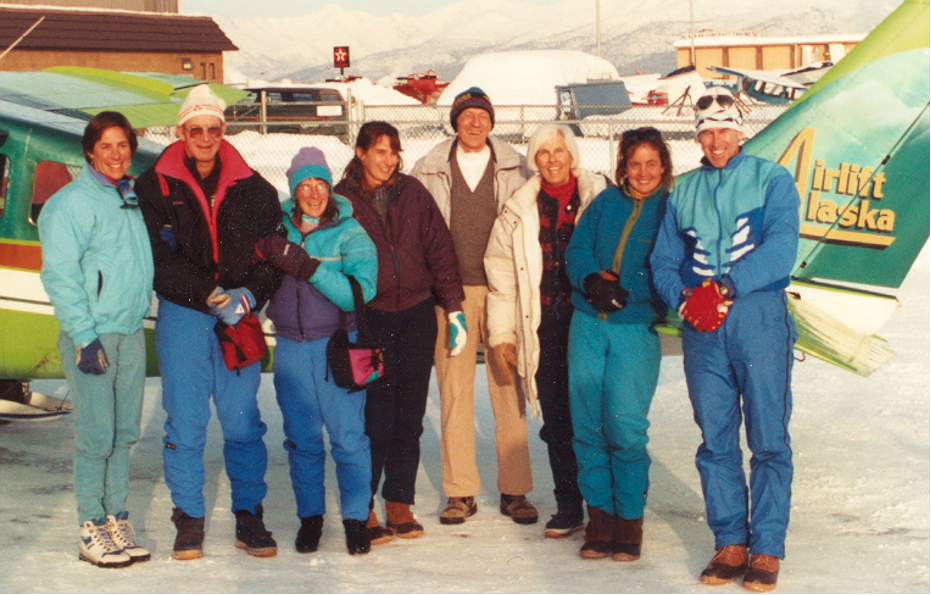
What is your greatest Nordic accomplishment?
As a former coach, I am still excited to hear about the accomplishments of my skiers, both as competitors and ultimately as productive members of our community. I hope I played a small role in helping them succeed as skiers as well as helping them see life beyond the confines of racing. A few examples: Brett Layser, after a successful ski career, went on to fly Harrier jets for the Marines; Erich Wilbrecht, who luckily had far better coaches in college, went on to the Olympics, remains competitive against skiers half his age, and supports many important causes in our valley; and Kim Svendsen Hunt, a Junior National Champion during her racing career, went on to be a wonderful teacher and coach at the Wilson School.
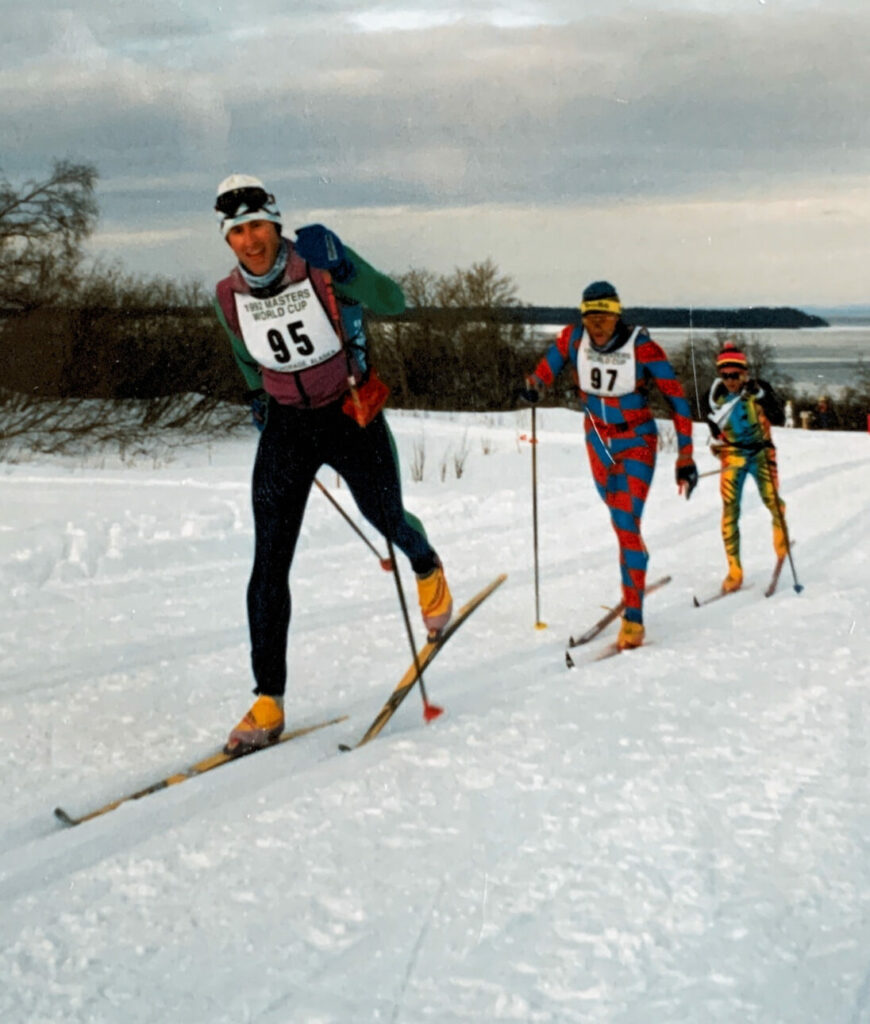
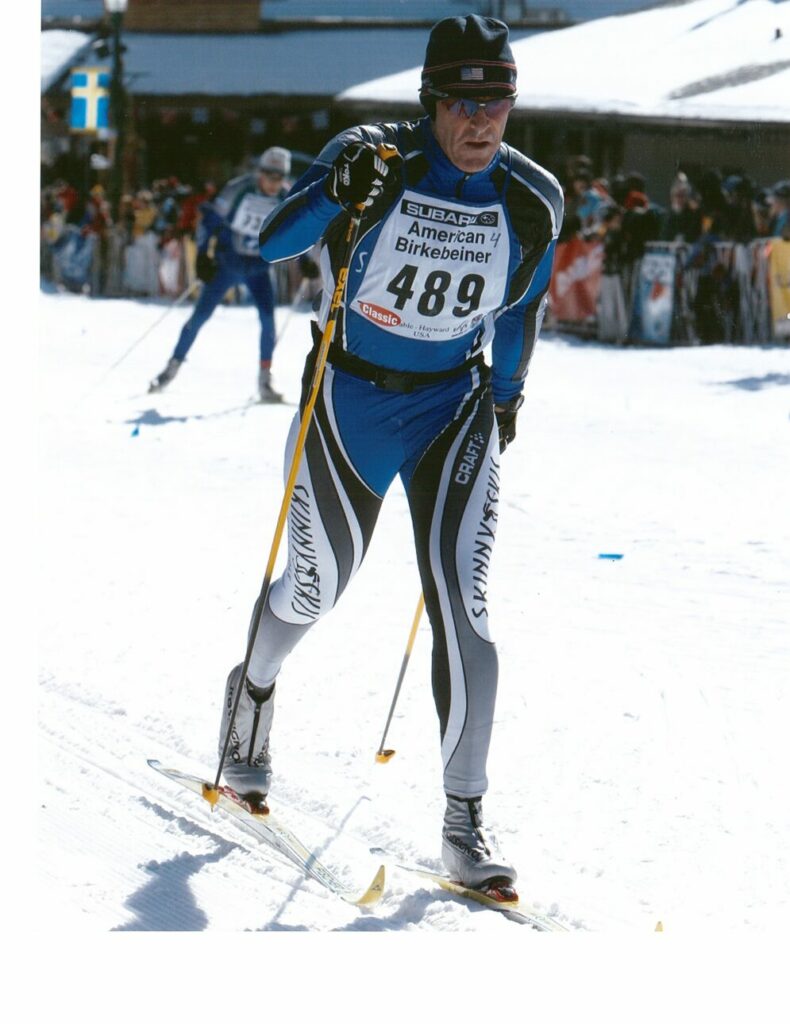
In terms of my own ski results, beating a Russian at the World Masters Championship in Canmore, to take a bronze medal in the 30k classic race, was certainly a highlight! By sticking with classic technique (bike racers who picked up skate technique were way too fit to race against), I captured gold and bronze medals at several US Masters Championships and won my age group at the 54k American Birkebeiner, for four straight years. I also placed 6th overall at the Canadian Birkebeiner. I hope to train more consistently over the next few years so I can make a respectable showing at the Norwegian Birkebeiner … perhaps when I move into the next age group!
“Cross country skiing can be a wonderful outing on day one … but, to truly ski, it can also be (initially) hard, frustrating, and perhaps not for everyone. Well, do not let the hard part discourage you. Keep after it! Find a coach or ski with friends who have been there before you. No matter your ability, you can find joy in cross country skiing. “
Sean O’Malley
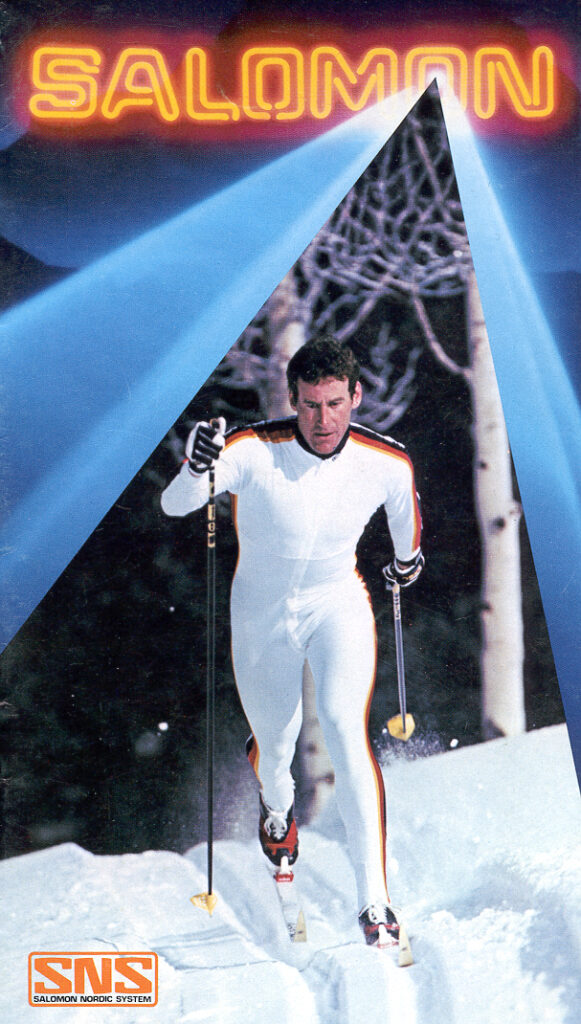
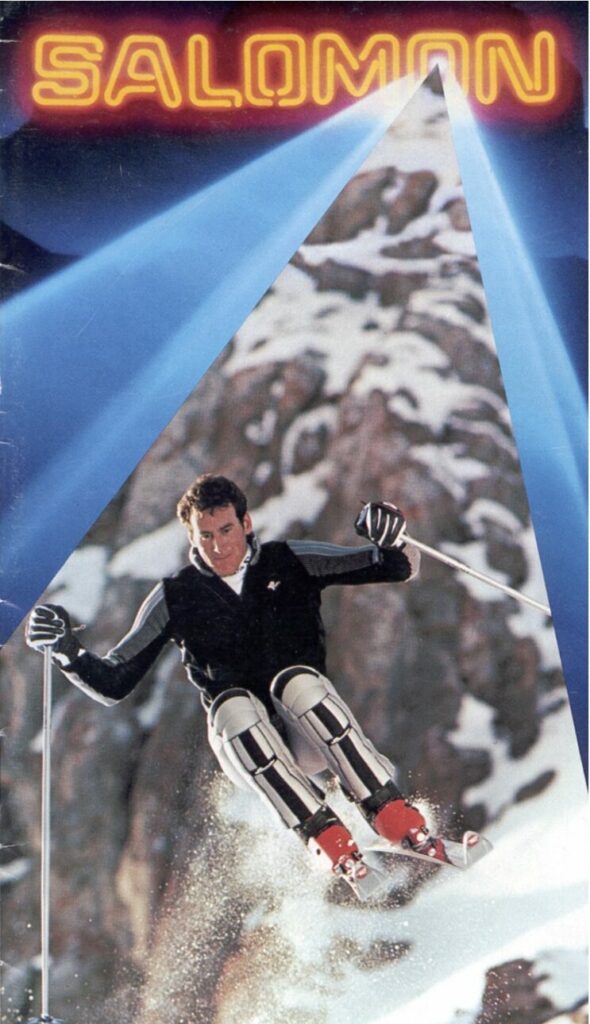
What is your greatest contribution to the Nordic community?
Frustrated with the lack of information (and publicity) about Nordic skiing in our valley, I published the first edition of the Jackson Hole Nordic News in 1997. Pre-internet (or at least prior to many people having email addresses), it was printed on paper and copies were mailed to the 30 or 40 people who I thought might be interested. My wife Mia helped edit as well as addressed and stamped the envelopes for those early editions! It was great fun and wonderfully satisfying to produce a newsletter every 10 days or so – and to occasionally get some positive feedback. By the time I ran out of gas for producing the JHNN in 2013 (as much as I loved my job as County Engineer, the work ultimately consumed any reserves of creativity I possessed), my mailing list exceeded 400 peeps.
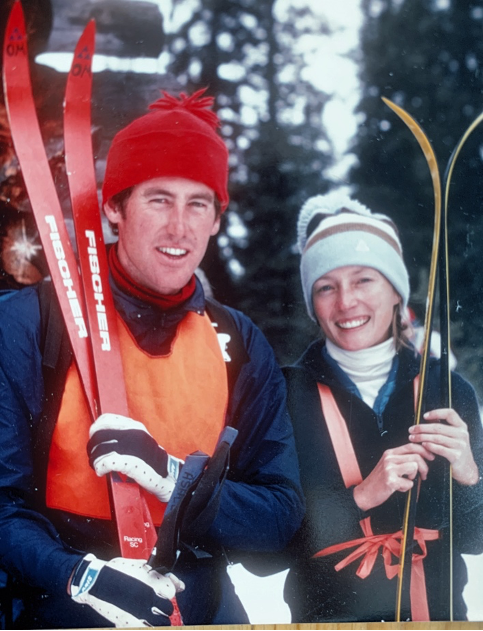

My goal with the newsletter was to acknowledge folks who deserved acknowledging, either for their skiing, coaching, or other contributions to our skiing culture; provide historical perspective; and share the latest developments in training, equipment, and waxing – while not taking any of it too seriously. I hope the Jackson Hole Nordic News helped grew our Nordic community and bring us all a little bit closer.
As an example of not taking skiing too seriously, here is the disclaimer at the end of nearly all of the 250+ Nordic News editions …
“Small Print”
“If this is your first issue of the Nordic News … and you are wondering why in the heck you are being subjected to this … it’s because either, 1) I know you and think you need this stuff; 2) you asked me to put you on the list; 3) someone who either likes you (or doesn’t like you) gave me your email address and asked me to put you on the list; 4) you have a child in the JH Nordic program (or you are a child in the Nordic program); or, 5) perhaps you are just childlike.
Anyway, this is one in a sporadic stream of Nordic skiing-related emails for the 2010-11 season – see you on the tracks! “
I am grateful that Steve Swan has helped fill the Nordic News void by providing entertaining and keen observations of the human and natural world from his perch in Trail Creek’s grooming machine – and for the incredibly comprehensive reports provided by Nancy Leon and her crew at the JH Nordic website.
Editor’s Note: See one of Sean’s Jackson Hole Nordic News posts (2005)
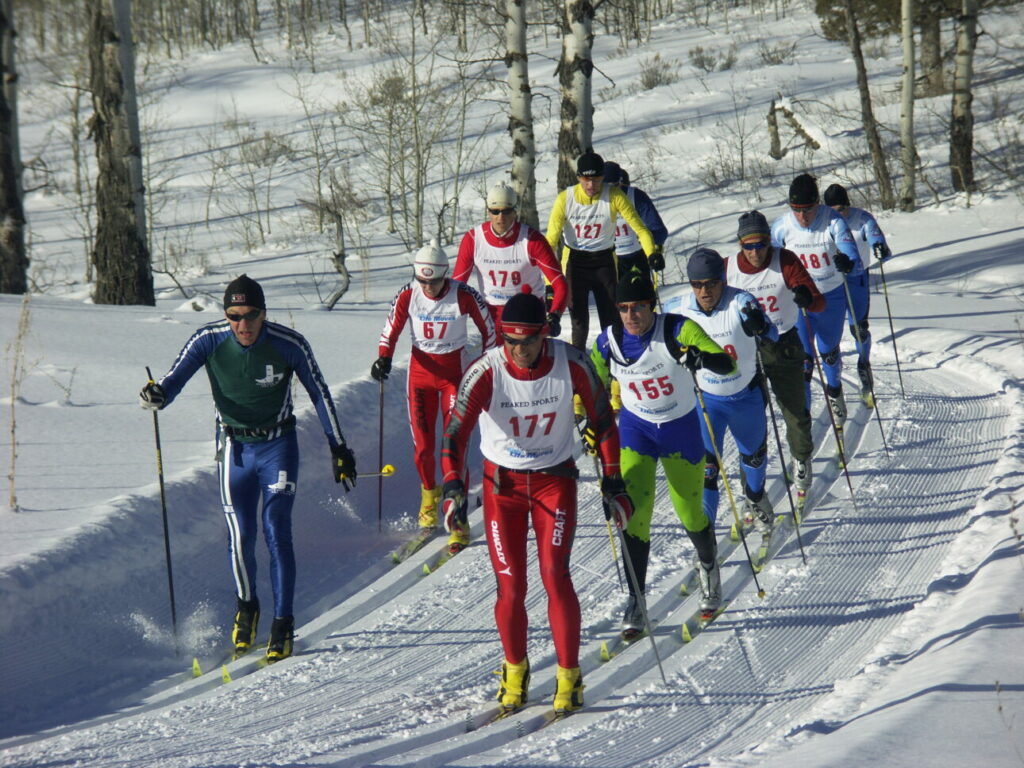
What advice would you offer a Nordic skier who is just starting out?
This is aimed more at the budding ski racer … Although it has often taken a back seat to Alpine in this country, Nordic is cool and unique. Therefore, the folks who do it are (obviously) cool and unique! Racing, training, or just plain touring can be great fun and very satisfying. More importantly, the discipline required to learn new skills and to strengthen your mind and body carries over in positive ways to other aspects of your life. Walking on skis can be accomplished by almost anyone, but to truly ski, to execute a solid kick and enjoy a long glide, skate up and down through the Potholes in Grand Teton, or to descend Suicide Hill at 35 mph on edgeless, skinny skis, requires mileage and technique. This takes time – there is no instant gratification.
As Jimmie Dugan in A League of Their Own says: “If it were easy, everybody would do it. Hard is what makes it great”. Cross country skiing can be a wonderful outing on day one … but, to truly ski, it can also be (initially) hard, frustrating, and perhaps not for everyone. Well, do not let the hard part discourage you. Keep after it! Find a coach or ski with friends who have been there before you. No matter your ability, you can find joy in cross country skiing.
And be sure to watch a replay of the Women’s 30k from the Olympics!
